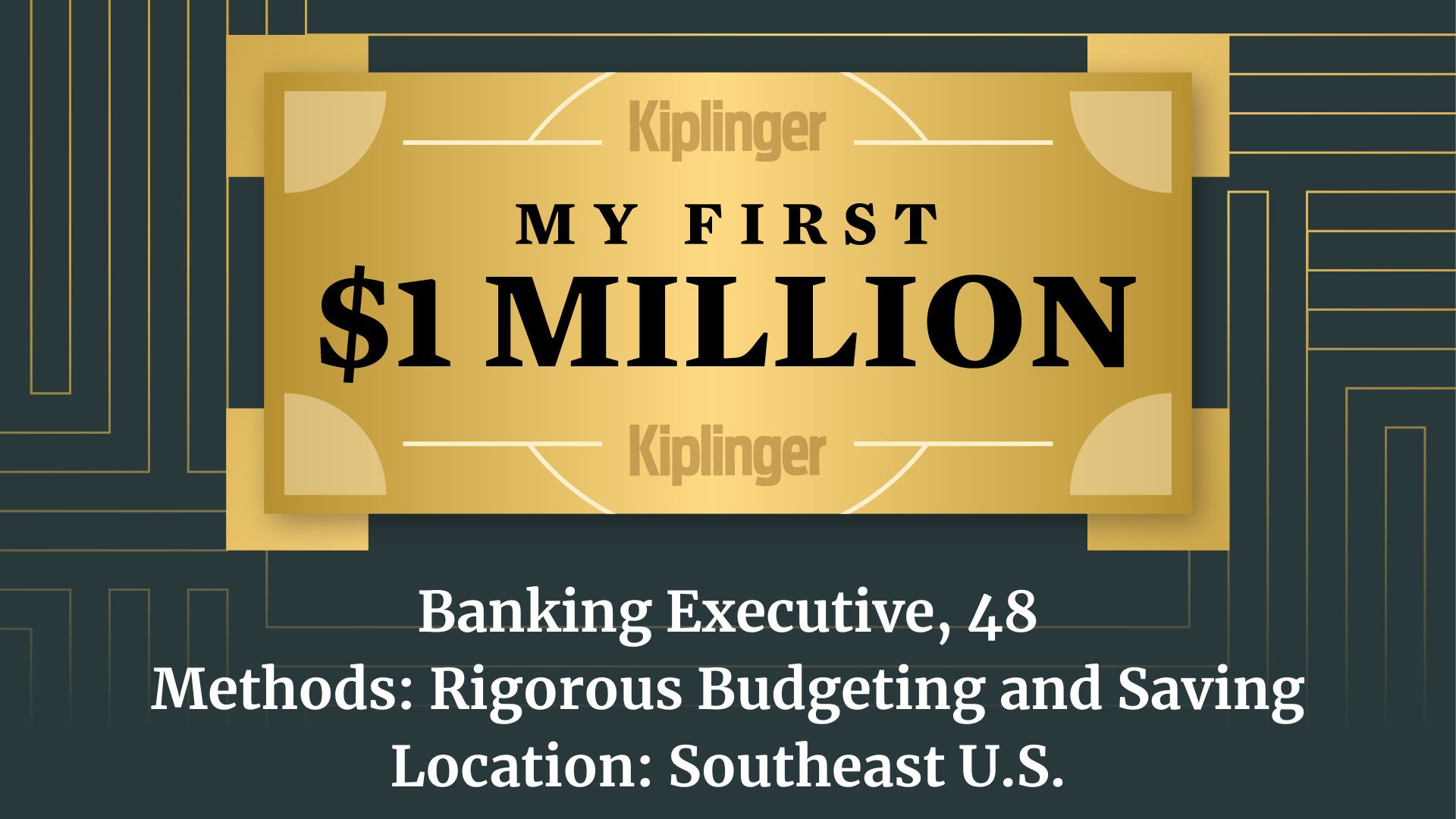
You've heard the mantra over and over: budget, budget, budget. This is money management rule number one as you graduate, start bringing home a paycheck and begin life in the real world. But if you've never had to pay for life's essentials yourself, coming up with a realistic spending plan can feel like wandering in the dark.
SEE OUR SLIDE SHOW: 10 U.S. Cities With the Cheapest Cost of Living
If your parents have been covering or subsidizing your living expenses at home or college, you probably need a reality check before stepping out on your own. For many young adults, the combination of lower-than-expected take-home pay coupled with higher-than-expected living expenses can be a recipe for financial disaster. We're here to shed some light on your finances and help you build a budget that avoids surprises.
From just $107.88 $24.99 for Kiplinger Personal Finance
Become a smarter, better informed investor. Subscribe from just $107.88 $24.99, plus get up to 4 Special Issues

Sign up for Kiplinger’s Free Newsletters
Profit and prosper with the best of expert advice on investing, taxes, retirement, personal finance and more - straight to your e-mail.
Profit and prosper with the best of expert advice - straight to your e-mail.
Your income
Let's start with your paycheck. While you're savvy that Uncle Sam gets first dibs on your hard-earned money, you may not be prepared for how much the government will take. (I still have a hard time with this one.) For example, if you earn a salary of $35,000, you'll likely only see about $28,356 after federal taxes, Social Security and Medicare are subtracted. That doesn't include state taxes or any deductions from your paycheck for workplace benefits, such as medical and dental insurance or a retirement savings plan. When all is said and done, you're likely looking at a take-home pay of -- brace yourself -- $25,350 or so per year. Plug in your salary to the calculator at PaycheckCity.com and you'll get the breakdown:
| Monthly gross pay | $2,917 ($35,000 divided by 12 months) |
| Federal taxes | $331 |
| Social security | $181 |
| Medicare | $42 |
| State taxes | $100 |
| Employment benefits | $150 |
| NET INCOME | $2,113 per month ($25,356 per year) |
Your expenses
Now that you know how much you can expect to bring home, you can divvy up your paycheck. Here's a general guide to help you budget your money to make sure your expenses are covered. You may have to make some adjustments for your situation. If you spend less on housing, for example, you can put the extra money from that category toward paying down debt. The dollar figures in parentheses are based on our above example of a $35,000 gross salary with a monthly take-home pay of $2,113 per month after taxes and other deductions.
30% ($634) Housing
10% ($211) Utilities and other housing expenditures (including renters insurance)
15% ($317) Food (at-home and away)
10% ($211) Transportation (including car loan)
10% ($211) Debt repayment (student loans and credit cards)
10% ($211) Saving
5% ($106) Clothing
5% ($106) Entertainment
5% ($106) Car insurance and miscellaneous personal expenses
In terms of dollar figures, this actually breaks down pretty close to the lines of what things will actually cost you. Housing, of course, will vary depending on your location and also on whether you live alone or with roommates. Debt repayment is another wild card for which you may have to make adjustments. We'll get to that topic later, but for now let's take a closer look at the utilities and household expenses category.
We start with utilities, such as gas and electric. Your actual cost will vary by your location, season and how well-insulated your apartment is. If you live in Las Vegas, for example, you'll spend a lot more on air conditioning this summer than someone in Minneapolis. But budgeting an average of $50 to $60 per month to power a one- or two-bedroom apartment should suffice. And many apartments come with garbage and water service included, so you may not have to worry about that.
For renter's insurance, a good policy can run about $200 a year -- or $17 a month.
You can save money on your Internet service by going back to the stone age of dial-up. You can find service for about $10 a month. But if that's too drastic for your lifestyle, consider getting high-speed service through your cable-TV provider. You can usually get a cut-rate deal for bundling services together. The national average cost for basic cable is about $15 a month -- $30 for expanded basic, to which the vast majority of cable watchers subscribe. Add a high-speed Internet connection for $40, and you'd do well to budget $70 or so for the whole package.
You might save money on your phone bill by scrapping your land line altogether and sticking to your cell phone. (A bare-boned landline service typically costs about $20 to $25 a month.) Cell phone bills can vary widely by location, provider and, of course, your own personal use. But the average cell phone bill in the U.S. runs about $50 to $60 a month. If that's too steep for your budget, consider using a prepaid cell phone that charges you only for the minutes you use. If that's too conservative, you may have to look for other areas to cut back.
Now let's add 'em all up: $50 for utilities, $17 for renter's insurance, $70 for cable and Internet plus $50 for your cell phone, and you're looking at $187 a month. We had budgeted $211, so that leaves you a $24 cushion for those months in which costs may vary. And if you live with a roommate, you may be able to share the cost of your utilities, cable and Web access, giving you even more leeway in your budget.
For help keeping track of your expenses, use Kiplinger's Budget Worksheet.
Possible adjustments
A couple areas you'll want to watch out for include the transportation and debt repayment categories.
If you own your car outright, $211 a month for transportation is a good estimate -- perhaps even too high. But if you have a car loan, I don't know many people who pay less than $211 to begin with, let alone the money they spend on gas, parking, maintenance and repairs. So before you rush out after graduation to buy your first set of wheels, make sure you are aware of the real cost of buying a car. For maintenance and repairs, you should budget at least $500 a year, or $42 a month -- maybe more if you're buying an older car.
For gas, let's assume you drive 1,000 miles a month and your car averages 23 miles per gallon. You'd need to budget about $87 per month with prices at $2 per gallon. That leaves only $124 for a car payment, parking and other transportation expenses. Good luck.
Some cities are easy to live in without a car, thanks to good public transportation and bike paths. But in other cities, a car truly is a necessity. Look into carpooling with friends or coworkers. Or, you'll have to cut back somewhere else in your budget -- say, spend less on food and entertainment or take on a roommate to split the cost of rent to help make ends meet.
As for debt repayment, a college senior graduates with at least $20,000, on average, in student-loan debt. If you fall into that camp, you'll spend $230 a month on a standard ten-year repayment schedule at 6.8% interest. You may need to negotiate a different time schedule with your lender, say, a 15- or 20-year repayment. Or, you can ask for a graduated repayment schedule where you pay less per month now, but more toward the end of your loan period. There is also an income-contingent repayment which bases your bill on a percentage of your actual salary.
The average college senior also graduates with more than $3,000 in credit card debt. At 18% interest and paying $80 a month (4% minimum payment of initial balance), it'll take you more than 4 1/2 years to rid yourself of that debt. And that's assuming you don't charge another dime.
Paying yourself first
One category we'd like to see you stick with the fixed amount (or higher) is savings. This is an excellent habit to get into right from the get-go. Start by building up your short-term emergency savings, and then branch out into investments for the long term. If a 22-year-old saved $211 every month and earned an average annual rate of 8% on her money, she'd have about $951,000 saved up by the time she turned 65. If she increased her monthly contribution every time she got a raise, sticking with the 10% savings rule, she'd have well over $1 million -- perhaps even $2 million.
There is an exception to this rule, however. If you have high-interest debt, you'd do better to take your 10% savings allotment and pay off your credit cards first and then start saving. It doesn't do any good to earn 8% on your savings if you're paying 18% on your credit-card balance. Learn more about whether you should save or pay down debt.
Editor's note: This column was updated in May 2009.
Profit and prosper with the best of Kiplinger's advice on investing, taxes, retirement, personal finance and much more. Delivered daily. Enter your email in the box and click Sign Me Up.

-
 How to Safely Open an Online Savings Account
How to Safely Open an Online Savings AccountOnline banks offer generous APYs that most brick-and-mortar banks can't match. If you want to make the switch to online but have been hesitant, I'll show you how to do it safely.
-
 7 Ways to Age Gracefully Like the Best Stock Photo Seniors
7 Ways to Age Gracefully Like the Best Stock Photo SeniorsAs a retirement editor, I've gleaned valuable wisdom (and a lot of laughs) from one older couple that tops the seniors' stock photo charts.
-
 My First $1 Million: Banking Executive, 48, Southeast U.S.
My First $1 Million: Banking Executive, 48, Southeast U.S.Ever wonder how someone who's made a million dollars or more did it? Kiplinger's My First $1 Million series uncovers the answers.
-
 21 Last-Minute Gifts for Grandparents Day 2025 to Give Right Now
21 Last-Minute Gifts for Grandparents Day 2025 to Give Right NowHoliday Tips Last-minute gifting is never easy. But here are some ideas to celebrate Grandparents Day.
-
 Texas Sales Tax-Free Weekend 2025
Texas Sales Tax-Free Weekend 2025Tax Holiday Here's what you needed to know about the Texas sales tax holiday.
-
 Alabama Tax-Free Weekend 2025
Alabama Tax-Free Weekend 2025Tax Holiday Here’s everything you need to know about the 2025 back-to-school Alabama sales tax holiday.
-
 The Sweet 23: States Where Twix and Kit Kat Avoid the ‘Candy Tax’
The Sweet 23: States Where Twix and Kit Kat Avoid the ‘Candy Tax’State Taxes There’s something spooky this Halloween, and it’s not just the ghouls. Find out if your state’s sales tax takes a bite out of sweet savings.
-
 Florida Back-to-School Tax-Free Holiday 2025
Florida Back-to-School Tax-Free Holiday 2025Sales Taxes The new tax-free holiday in Florida brought month-long savings on computers, clothing and other school supplies.
-
 How to Search For Foreclosures Near You: Best Websites for Listings
How to Search For Foreclosures Near You: Best Websites for ListingsMaking Your Money Last Searching for a foreclosed home? These top-rated foreclosure websites — including free, paid and government options — can help you find listings near you.
-
 Five Reasons You Shouldn't Shop Amazon's Prime Big Deal Days
Five Reasons You Shouldn't Shop Amazon's Prime Big Deal DaysSmart Buying Are Amazon Prime Big Deal Days still a good deal? We'll break it down.
-
 Debit Cards vs Charge Cards
Debit Cards vs Charge Cardscredit & debt Whether sticking to a budget or reaping big rewards, understand whether debit cards vs charge cards are right for you.
